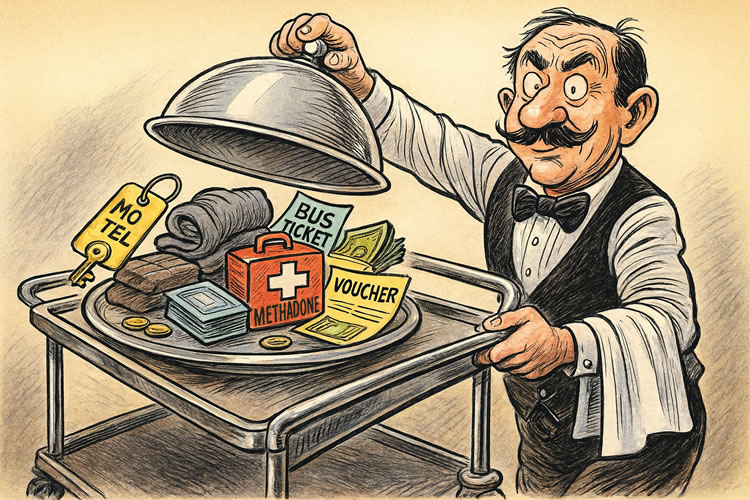When WCAX-TV posted a story this week on proposed cuts to the Corporation for Public Broadcasting (CPB), it opened with a familiar face: Cookie Monster. The implication was clear — without CPB, Sesame Street and its beloved characters might disappear from American screens.
But that framing was wildly misleading.
The truth? Sesame Street hasn’t been financially dependent on CPB funding in years. The show has been backed by private streaming deals, starting with a multiyear contract with HBO in 2015, which gave the premium cable network first-run rights while PBS aired episodes months later. That deal officially ended at the end of 2024, and as of May 2025, Sesame Street found a new home at Netflix, further underscoring its independence from taxpayer funding.
In short: Cookie Monster’s paychecks haven’t come from taxpayers in a long time.

What CPB Actually Does
Created by Congress in 1967, the Corporation for Public Broadcasting distributes federal funding to local PBS and NPR affiliates, as well as educational programs, emergency broadcasting infrastructure, and rural outreach. It’s not a content creator, and it doesn’t directly run stations. It functions as a clearinghouse and subsidy pipeline — mostly for small, local stations that don’t have major donor bases.
In FY2023, CPB received roughly $465 million in federal appropriations. Of that:
- Over $300 million went to local public TV stations,
- Roughly $70 million to radio,
- And the rest to system infrastructure and programming support.
Contrary to popular belief, CPB doesn’t run Sesame Street, Nova, or Morning Edition. It helps keep the lights on for the stations that broadcast them — particularly those in rural or underserved areas.
The Real Story Behind Sesame Street
Sesame Street is produced by Sesame Workshop, a private nonprofit that pulled in approximately $187 million in revenue in 2023. The organization has major licensing deals, international co-productions, corporate sponsorships, and merchandising streams. In fact, Sesame Street’s largest funding source today is not public — it’s commercial partnerships.
From 2015 through 2023, Sesame Workshop had an exclusive first-run deal with HBO, allowing the premium network to air new episodes first in exchange for financial backing. That deal was extended under Warner Bros. Discovery’s Max platform until the partnership ended in 2023. Although the end of that deal did create a funding gap, Sesame Workshop still reported over half a billion dollars in assets.
While the nonprofit laid off staff earlier this year and posted a ~$5 million deficit, that shortfall had nothing to do with CPB funding — which now makes up less than 4% of Sesame Workshop’s revenue. In other words, Cookie Monster isn’t waiting in line at the unemployment office because of federal budget cuts.
So Why the Cookie Monster Photo?
That’s the question. The answer seems to lie in optics.
Using Cookie Monster — a character millions of Americans associate with educational innocence and nostalgia — tugs at emotional heartstrings. But it also masks the real debate: Should taxpayer dollars continue funding a public broadcasting ecosystem that many argue is outdated, duplicative, or ideologically slanted?
Public defenders argue yes. They point to the educational value, especially for low-income children, the role local stations play in rural news coverage, and the emergency broadcast functions many stations still provide.
Critics counter that CPB funding has outlived its usefulness in the streaming era. Where once PBS was the only source for non-commercial educational programming, today parents and educators can access thousands of free resources online — from YouTube channels and homeschooling curricula to Khan Academy, Duolingo, and thousands of podcasts.
🍁 Make a One-Time Contribution — Stand Up for Accountability in Vermont 🍁
What Defunding CPB Would Actually Mean
Let’s be clear: Cutting CPB funding wouldn’t erase PBS or NPR overnight. But it could force the closure or consolidation of smaller local affiliates — especially in rural states — that depend on CPB for 30–50% of their budgets.
For instance:
- A local radio station in rural Wyoming might not survive without CPB’s annual grant.
- Tribal communities and small-town emergency broadcast networks might lose signal reliability or localized news.
- Niche educational shows that don’t draw corporate sponsors may disappear from the air.
However, the core content — Frontline, NOVA, PBS NewsHour, Sesame Street, Marketplace, etc. — would almost certainly survive through direct donations, licensing, and syndication.
And thanks to the internet, almost all of that content — or better alternatives — is now available on-demand, for free or low cost.
The Bottom Line
CPB is not the lifeline it once was. Public broadcasting is no longer the gatekeeper of educational or civic content. Today, it’s one player among thousands — and it receives hundreds of millions in taxpayer dollars annually, despite having access to philanthropic, corporate, and digital revenue streams.
So when a local news outlet posts a photo of Cookie Monster to imply he’s about to be cut loose — it’s not just manipulative. It’s false.
If the debate is going to happen, let’s at least base it on facts — not furry blue nostalgia.
Dave Soulia | FYIVT
You can find FYIVT on YouTube | X(Twitter) | Facebook | Parler (@fyivt) | Gab | Instagram
#fyivt #publicmedia #cpbfunding #cookiegate
Support Us for as Little as $5 – Get In The Fight!!
Make a Big Impact with $25/month—Become a Premium Supporter!
Join the Top Tier of Supporters with $50/month—Become a SUPER Supporter!









Leave a Reply